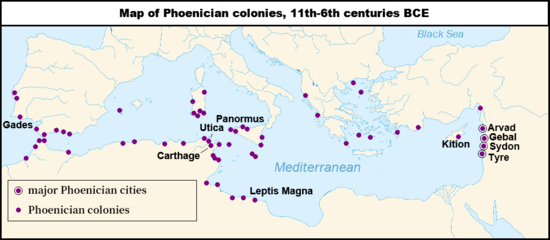Emporium (antiquity)
An emporium refers to a trading post, factory, or market of Classical antiquity, derived from the Ancient Greek: ἐμπόριον, romanized: (empórion), which becomes Latin: emporium. The plural is emporia in both languages, although in Greek the plural undergoes a semantic shift to mean "merchandise".[1]
Emporia varied greatly in their level of activity. Some seem to have functioned much like the permanent European trading colonies in China, India or Japan in the Early Modern period, or those of the Italian maritime republics of the Middle Ages in the Levant. Others were probably annual events for a few days or weeks like the medieval Champagne fairs, or modern trade fairs.
Examples[]
Famous emporia include:
Elim, where Hatshepsut kept her Red Sea fleet;
Elat, where Thebes was supplied with mortuary materials, linen, bitumen, naphtha, frankincense, myrrh and carved stone amulets from Palestine, Canaan, Aram, Lebanon, Ammon, Hazor, Moab, Edom, Punt and the Arabian Peninsula from Petra to Midian;
Naucratis, the only Greek colony in Egypt;
Olbia, which exported cereals, fish and slaves;
and Sais, where Solon went to acquire the knowledge of Egypt.
In the Hellenic and Ptolemaic realm, emporia included the various Greek, Phoenician, Egyptian and other city-states and trading posts in the circum-Mediterranean area. Among these commercial hubs were cities like Avaris and Syene in Lower Egypt, Thebes in Upper Egypt, and Opone, Elim, Elat and other Red Sea ports. For the Hittites, it encompassed Kanesh and Kadesh. For Phoenicia, it included Cádiz, Carthage, Leptis Magna, and Cyrene, among others (although Cyrene had been founded by Greeks).
See also[]
- Emporion
- Emporium (early medieval)
Sources[]
Birley, Anthony. Septimius Severus: The African Emperor. pp. 1–7.
References[]
- History stubs
- Phoenicia stubs
- Greek colonization
- Phoenician colonies
- Greek words and phrases
